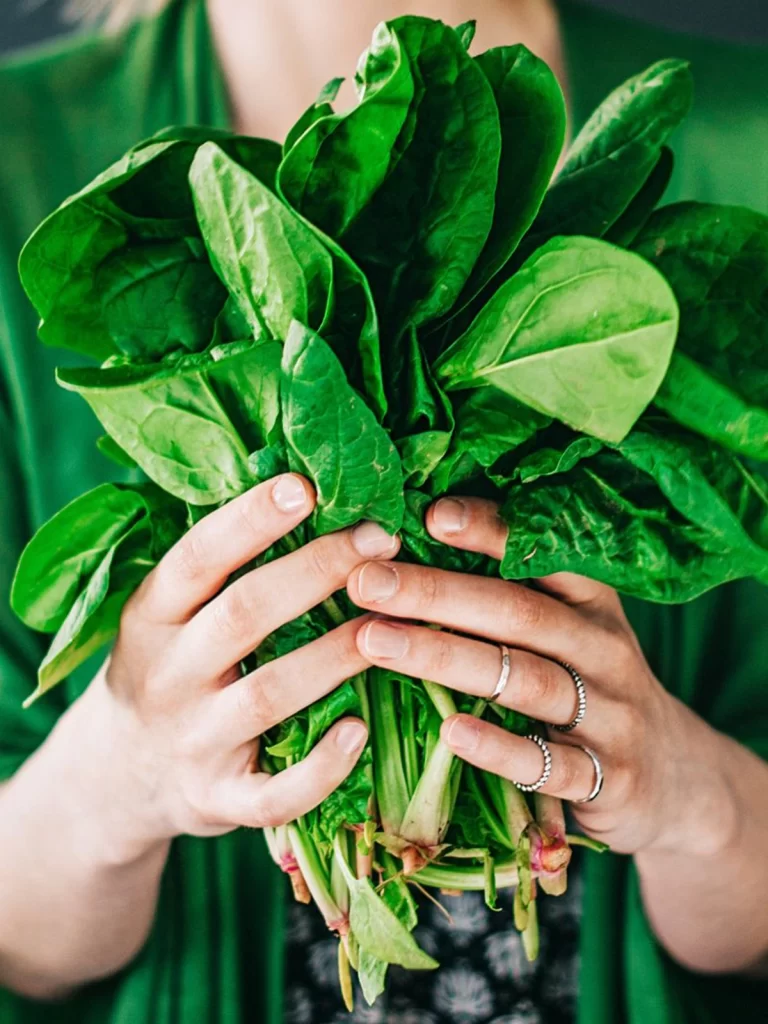Nourish Your Body: 8 Top Foods for Perimenopause and Menopause Health
For many women, navigating perimenopause and menopause can feel daunting, with fluctuating hormones and uncomfortable symptoms like hot flashes, mood swings, fatigue, insomnia, and brain fog. However, the foods you choose to eat can play a powerful role in how you feel, supporting your overall health and wellbeing
during this transitional time.
Including the following nourishing foods in your diet can help balance your hormones, support brain, bone and cardiovascular health, and help manage symptoms of perimenopause and menopause naturally.
ONE: Flaxseeds
Flaxseeds, also known as linseeds, are an excellent source of phytoestrogens, particularly lignans, which help support hormonal balance during perimenopause and menopause. These plant compounds mimic estrogen in the body. They bind to estrogen receptors, where they have a weak oestrogen-like effect. During
perimenopause, when estrogen levels are fluctuating, phytoestrogens can help balance estrogen levels by promoting healthy estrogen metabolism and potentially lightening menstrual periods. In menopause, when estrogen levels are low, phytoestrogens can have a mild estrogenic effect, which may offer some relief from
menopausal symptoms such as hot flushes.
Flaxseeds are an excellent source of fibre, which plays a crucial role in supporting digestive health, regulating blood sugar levels and supporting heart health by lowering cholesterol, and promoting bowel regularity. Flaxseeds act as a prebiotic fibre. Prebiotics are non-digestible fibres that feed beneficial gut bacteria, promoting a healthy microbiome. The soluble fibre in flaxseeds provides nourishment for these
beneficial bacteria, which helps support overall gut health, improve digestion, and potentially enhance immune function.
The best way to have flaxseeds is ground, to enhance digestion and nutrient absorption. Keep ground flax in the fridge so they don’t oxidize. If you have a coffee grinder you can grind up a fresh batch every few days. Aim to have around 2 Tbsp of ground flaxseeds daily, spread out into smoothies, porridges, Bircher muesli, through yoghurt. Make flaxseed bread, add them to banana bread, protein balls and healthy muesli cookies.
TWO: Dark Green Leafy Vegetables
When women lose the cardio-protective and anti-inflammatory effects of oestrogen women’s risk of cardiovascular disease increases significantly. Green leafies are packed with heart friendly nutrients and antioxidants such as vitamins K, C, and E, potassium and magnesium. These nutrients help reduce inflammation and oxidative stress, both of which are linked to cardiovascular disease. Antioxidants in leafy
greens, such as flavonoids and carotenoids, help combat inflammation, which is a risk factor for heart disease.
Incorporating a variety of green leafy vegetables into your daily diet can also provide a range of nutrients and compounds that support brain health and reduce inflammation throughout the body. Greens leafy vegetables like spinach, kale, collard greens, beet greens, arugula, dandelion greens, bok choy and mustard greens are
high in folate and vitamins A and K, which have protective anti-inflammatory properties. Folate is particularly important for brain health as it plays a role in neurotransmitter synthesis and helps regulate homocysteine levels, which, when elevated, can contribute to cognitive decline and neurodegenerative diseases.
Green leafy vegetables are abundant sources of antioxidants, including vitamins C and E, carotenoids (beta-carotene, lutein) and quercetin, which help combat oxidative stress and can help reduce inflammation in brain. This can help protect brain cells from damage caused by free radicals.
Some green leafy vegetables, like spinach and Swiss chard, are naturally high in nitrates. Nitrates have been shown to improve blood flow, including blood flow to the brain, which can enhance cognitive function.
During late perimenopause and menopause, declining oestrogen levels accelerate bone loss, raising the risk of osteoporosis. Calcium needs increase during this time, as oestrogen helps with calcium absorption and retention in bones. Dark, leafy greens like kale, spinach, and Swiss chard are vital as they provide calcium,
magnesium, and vitamin K essential for maintaining bone health. Consuming adequate calcium through foods like leafy greens will help mitigate osteoporosis risk and support overall health during menopause.
Green leafy vegetables are incredibly versatile. Add spinach or kale to green smoothies, create vibrant mixed green salads, toss bok choy or kale through stir-fries, add greens to sandwiches and wraps, as a pizza topping, in risotto, frittatas and quiches, spinach and ricotta lasagne, and serve baby spinach with omelettes or eggs on avocado toast. Lettuce leaves make a great gluten-free alternative to buns for burgers or tortillas for burritos.
THREE: Wild Salmon
Supporting brain health during perimenopause and menopause is crucial, as the brain undergoes significant changes during this time. The brain undergoes a “rewiring”; process, while it gets use to losing the calming effects of progesterone and anti-inflammatory and serotonin-boosting effects of oestrogen. This recalibration is at the root of many common perimenopausal symptoms, including mood swings, anxiety, depression, sleep disturbances, brain fog, migraines, hot flashes, and a reduced ability to manage stress. Taking steps to nourish the brain during this time can help ease these symptoms and improve cognitive health.
One of the best ways to nourish your brain is with omega-3 fats. Wild salmon is one of the best sources of omega-3’s which are particularly important for women during perimenopause and menopause. Women need a good supply of these healthy fats to support brain function and memory. Omega-3’s are also needed for healthy mood and prevention of depression. They have potent anti-inflammatory properties so great for relieving sore and painful joints. Omega-3’s also play an important role in keeping our skin healthy, moist and hydrated. Oestrogen stimulates the production of collagen and oils, which helps keep the skin firm and plump. So when levels drop women’s skin can become dry and less firm.
When women reach menopause their cholesterol levels often increase and their risk of cardiovascular disease increases. Omega-3’s can help lower cholesterol levels which offers protection against cardiovascular disease.
Astaxanthin is a carotenoid pigment found in salmon. This beneficial pigment not only gives salmon its vibrant red-orange colour but also acts as a powerful antioxidant. Astaxanthin has the advantage of being able to cross the blood-brain barrier where it can help protect the brain from oxidative damage and supports cognitive health.
Aim to consume wild Alaskan salmon, fresh or tinned, three times a week. Salmon is also a great choice because it’s a low-mercury fish. Salmon is delicious pan-fried, oven-baked or barbequed with salad or roasted and steamed veggies. Add salmon to poke bowls, sushi, and pasta dishes. Add flavour to salmon with a nutritious topping such as salsa, pesto, lemon and herbs, and Asian-inspired sauces made with tamari, ginger, garlic, honey and lemon juice.
FOUR: Broccoli
Eating brassica vegetables, such as broccoli, cauliflower, cabbage, Brussel sprouts and kale, can help balance estrogen levels and ease perimenopausal symptoms like irregular periods, weight gain, sore breasts, and PMS. This is due to their high content of indole-3-carbinol, a compound that supports healthy estrogen metabolism by promoting the conversion of oestrogen into a safer form, 2-hydroxy oestrogen, which lowers the risk of breast cancer. Indole-3-carbinol acts as a phytoestrogen, helping the body eliminate harmful oestrogens and reducing oestrogen dominance symptoms.
Some nutritious ways to enjoy brassica vegetables include roasted Brussels sprouts and cauliflower steaks, drizzled in olive oil and seasoned with herbs and spices. Add broccoli and cauliflower to stir-fries, curries, soups, and frittatas. Try mashed cauliflower, shredded raw Brussels sprouts, kale and cabbage tossed through salads, and fermented cabbage in sauerkraut and kimchi. Add kale to your green smoothie, or try crunchy kale oven-baked chips.
Broccoli sprouts have even higher levels of sulforaphane compared to their mature plants, containing 10-100 times more sulforaphane compared to mature broccoli.Broccoli sprouts can be easily incorporated into salads, wraps, sandwiches, smoothies, stir-fries, omelettes, blended through pesto, or as a soup, curry or pizza
topper.
FIVE: Walnuts
Walnuts are an excellent protein-rich snack for women during perimenopause and menopause. Oestrogen helps maintain muscle mass and bone density. When estrogen levels drop the need for protein increases to help address muscle and bone loss. Including protein in your diet also helps stabilize blood sugar levels, promoting satiety, and helping curb cravings. This not only improves insulin sensitivity but also supports a healthy weight.
Walnuts are also a great plant-based source of omega-3 fats, crucial for brain health and memory, and effective for reducing inflammation. They also provide ellagic acid and vitamin E, which are antioxidants that help protect the brain from oxidative damage.
Enjoy walnuts by adding a handful to your morning porridge, granola, or Bircher muesli. Add some to smoothies, yoghurt, protein balls, baked goods and raw desserts. Try walnut butter on toast or pancakes. Snack on them between meals, or sprinkling them over salads for a protein boost.
By incorporating these five nourishing foods into your daily diet, you can help ease the transition through perimenopause and menopause. Nourishing your body with the right foods will not only help you manage menopausal symptoms but will support long-term health and allow you to feel more vibrant and balanced.

